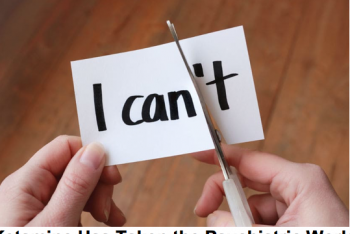Comments
MENTAL HEALTH - One California mental health crisis center grew its staff by almost 50% to accommodate that number of calls it’s been receiving since the state launched its 988 hotline.
California made it easier to call for help a year ago when it launched a simplified mental health crisis hotline: Dial three digits — 988 — and you can get in touch with a counselor immediately.
Since then, crisis centers have received more than 280,000 calls. That’s twice as many as any other state, signaling to mental health advocates that the service was badly needed.
Now, California crisis centers are taking stock of the new hotline and making plans to expand services in the coming year. They aim to hire more staff and to build out Spanish language services.
“I think 988 met its intended goal, which is that the easy-to-remember three-digit number encouraged more people to seek help,” said Narges Dillon, the executive director of the crisis center in Alameda County. “One of the dynamics we noticed is we’re also getting a lot of first-time callers, which is a sign that there are new people reaching out for help. To me, that was at the core of creating this program.”
Her center already had a local crisis line, but since the 988 rollout last year, the center has seen a 40% increase in calls.
“There has been a lot of curiosity,” she said. Her team of crisis counselors grew by almost 50%, rising from 45 to 77. The center also has 100 volunteers.
California launched the hotlines after Gov. Gavin Newsom signed a law to fund and expand crisis call systems. It’s one of 26 states that have passed laws to fund and sustain 988 hotlines.
Assemblymember Rebecca Bauer-Kahan, a San Ramon Democrat, wrote the bill and named it in the memory of Miles Hall, a 23-year-old Black man who was shot to death by Walnut Creek police in 2019 while he was experiencing a mental health emergency. She intended the bill to cut down on volatile 911 calls that could lead to police using unnecessary force.
“At the one-year mark, California has already passed legislation to implement 988 as a meaningful, police-free alternative to 911 for mental health crises in California,” Bauer-Kahan said in a statement to CalMatters. “But we are in the
By far, California has received the highest number of phone calls in the country, a 28% increase in volume since the lifeline launched. The number of calls was double the volume for the state with the second most, New York, according to Matt Taylor, director of network development for the National Suicide Prevention Lifeline.
“Most of the time, talk-line people are able to talk through on the phone, and avoid in-person responses,” said Los Angeles County Supervisor Janice Hahn, who has been an advocate for mental health awareness. She said she wants Los Angeles to be equipped with enough mental health teams to accommodate everyone in her county.
Altogether, 5 million calls, chats and texts have been made so far across the country to 988 hotlines in the last year. That’s 2 million more calls than the previous year, under the former 10-digit number.
Why was 988 created in the first place?
One in five U.S. adults are living with a mental illness, according to the National Institute of Mental Health.
In 2005, Congress established a National Suicide Prevention Helpline number to provide around-the-clock suicide prevention help for those in crisis. But funding for those crisis centers was limited. Some also said the 10-digit number — 1-800-273-8255 — was too long, and that people were forgetting what to dial.
In response, Congress in 2020 passed a bipartisan bill to launch 988 as an alternative and former President Donald Trump signed it into law. By July 2022, the Biden administration had allocated $1 billion to get the program up-and-running in every state. In the years to come, each state will be responsible for funding its own centers.
So far, 200 locally operated and funded crisis call centers are available nationwide.
In California, 1,116 crisis counselors work at 12 crisis centers across the state.
This year’s state budget included $19 million to support the program. Going forward the state expects to spend about $12.5 million annually to support the program, according to Stephanie Welch, deputy secretary of Behavioral Health at California Health and Human Services Agency.
“The biggest thing that I’ve recognized in my community is the ease of access,” said Tonya Mann, crisis services administrator for Kern County Behavioral Health and Recovery Services. “When someone is in a crisis and they might be emotionally dysregulated, having that phone number to memorize is difficult.”
Plans to expand 988 hotline
California call centers have some changes they want to make to the hotlines, including ensuring that people in need are directed to local resources. As is, the 988 services match callers to the area code on their phone. But when callers move away, they will still be connected to the clinic in their original place of residence.
Often, those calls will just get re-routed to their nearest clinic. But some have expressed concerns over whether time is lost when those calls or chats are re-routed.
“As you can imagine, that’s an imperfect system, but in any large urban center people are not necessarily living in the same place where they first got their cell phone,” Dillon of the Alameda County Crisis Center said. “So we may then recommend them to the appropriate geographic area.”
This week, Secretary of the U.S. Department of Health and Human Services Xavier Becerra announced that 988 will now offer Spanish text and chat services nationally.
Chris Kughn, the chief executive of Buckelew Programs, which responds to calls from Marin, Sonoma, Lake and Mendocino counties, said they already have Spanish-speaking counselors but “definitely need more.”
Assemblymember James C. Ramos, a San Bernardino Democrat, partnered with a crisis clinic that covers most of Southern California, to promote the hotline among tribal leaders.
Ramos, a member of the Serrano/Cahuilla tribe who is the first Native American to be elected to the Legislature, hopes that the lifeline can eventually connect Native American callers to Native American counselors, as a way to encourage more engagement from tribal communities.
“The 988 hotline is a lifesaving tool, and it is valuable in helping to reduce suicide death rates in Native American communities and among all groups of people,” Ramos said in an email to CalMatters.
“As we saw during COVID, access to services and the supporting infrastructure like WiFi access, were not equitably available to all communities. As we move forward with 988, we need to make sure all communities know about this service and can readily use it,” he said.
If you or someone you know is in crisis, call or text 988 for the Suicide and Crisis Lifeline, or contact the Crisis Text Line by texting TALK to 741741.
(Anabel Sosa is covering the justice system for CalMatters this summer. She holds a bachelor's degree in Political Science and recently graduated with a master's degree from the University of California, Berkeley Graduate School of Journalism. At Berkeley, Anabel worked on investigative stories in partnership with the Human Rights Center and Investigative Reporting Program. Her work is featured in the New York Post, The New York Times, The Los Angeles Times, and Reveal from the Center for Investigative Reporting. She is from New York. This article was first published in CalMatters.org.)
























